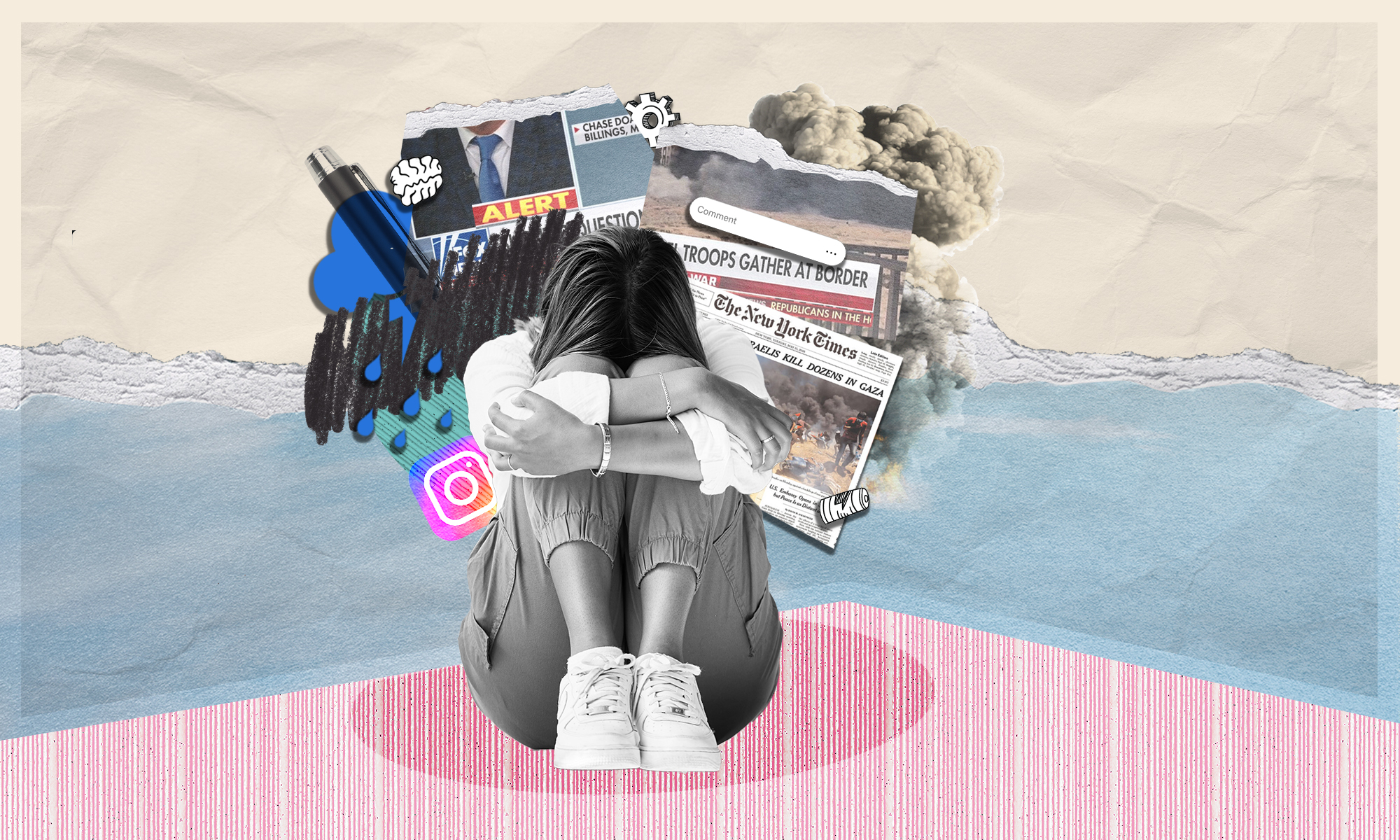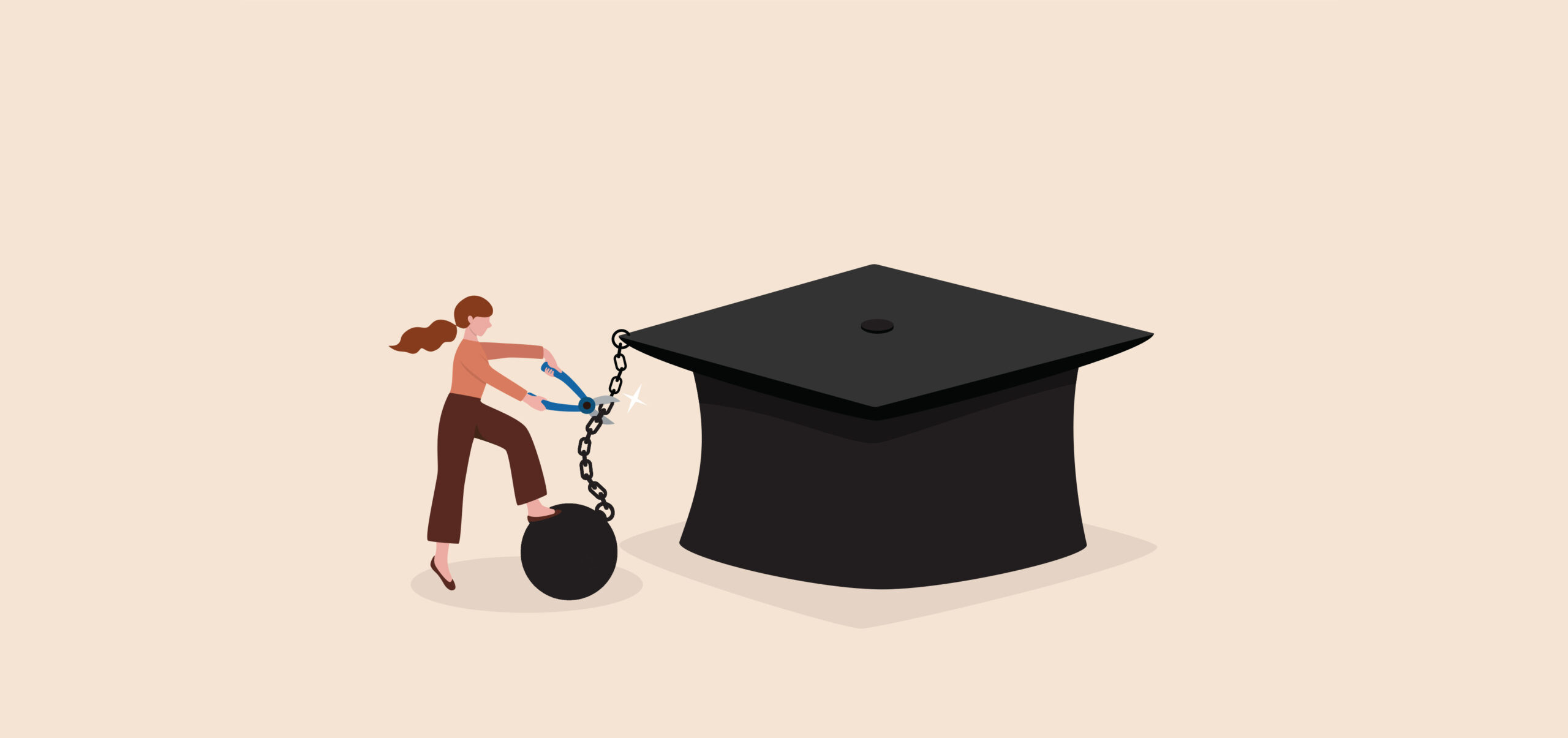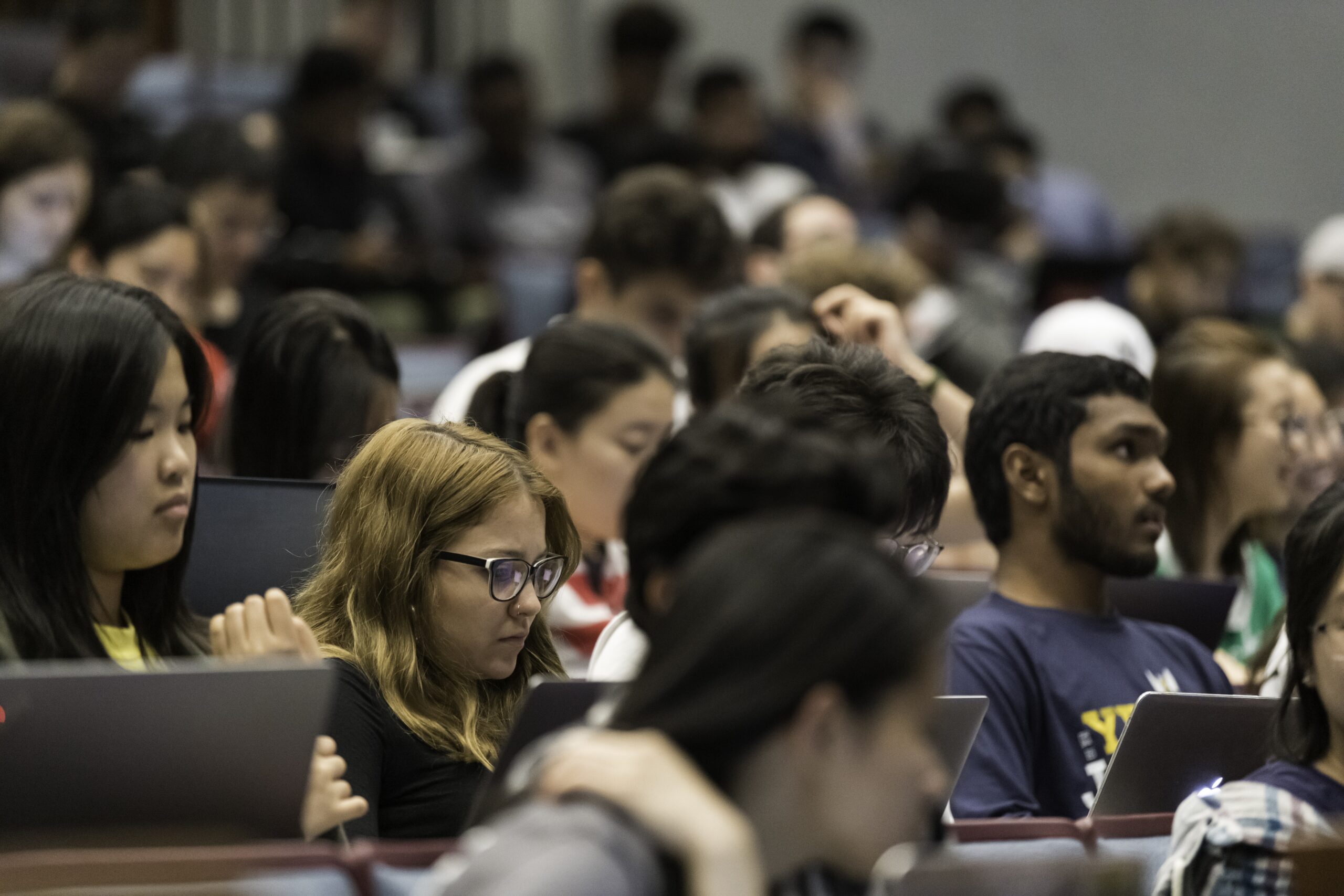In May of this year, Dr. Zainab Okolo became Senior Vice President of Policy, Advocacy, and Government Relations at the Jed Foundation, the nation’s leading nonprofit that protects emotional health and prevents suicide for teens and young adults. It was not just a new job for Okolo, who had previously led the Lumina Foundation’s work in student mental health, it was an inaugural position for the Jed Foundation which has moved from being a memorial initiative for a beloved son to the leading suicide prevention program in college mental health, to a national and international advocate for wellbeing strategies that support young people. The arrival of Okolo signals both the rising importance of external policies in youth mental health and college mental health, and the organization’s own expansion into public affairs.
When Okolo, Ed.D., LCMFT, who is a licensed therapist, led Lumina’s student mental health portfolio as a strategy officer, she designed and established the foundation’s mental health partnerships and investments while advising key stakeholders, including the U.S. Department of Education (ED), the U.S. Department of Health and Human Services (HHS), the State Higher Education Executive Officers Association (SHEEO), the American Council on Education (ACE), and the Steve Fund.
She will now lead JED’s growing Advocacy and Government Relations function, leveraging key relationships with external networks to strengthen the organization’s national and state-level presence in advocating for new federal, state, and local support for a comprehensive approach to mental health and suicide prevention. Okolo led the Jed Foundation’s first policy national summit in October of this year which resulted in the foundation’s new Youth Mental Health Policy Strategies.
LW: This was a big move both for you and JED. How do you feel several months into the job?
ZO: Oh, it feels full circle. I feel very fortunate as a marriage and family therapist for over a decade and having worked in higher education and those finding those two passions intersecting – — I feel very lucky. I’ve only been with Jed now for six months and we’ve made some incredible strides, but as I tell my team, I’m building on 20 plus years of just fantastic work that JED has done with institutions, with high schools, with other private sector entities so I’m building on a very solid foundation and I feel very fortunate to have this ground to build on. I also feel really energized that there’s a constant sense of urgency when it comes to mental health work and advocacy; when you’re watching the data, when you’re watching the news, when you’re specifically focused on youth, there’s always a sense of urgency. There’s always a drive to create the solve sooner rather than later. Because what our suicide trends and rates are telling us is that there is an urgent need. And for me, for as long as my career and time will allow, my goal is to create impact and change to bring suicide to zero. And I’m glad that I work at an organization that also has that as its North Star mission.
LW: The new position signals an expansion of JED’s work. Do you feel this was a natural evolution?
ZO: I do think that the pivot towards having an inaugural position focused specifically on policy, advocacy and government relations was really just a nod to the time that Jed found itself in within the national landscape. As you know, Jed Foundation has been a mental health advocacy organization that has been around for two decades now, focused on youth mental health and suicide prevention. And a lot of the work that Jed did was specifically targeted at ensuring colleges and universities had the appropriate programming and supports to serve youth mental health, resources and needs.
Jed has since expanded into working within high schools, and it’s done a lot of work to inform the ways mental health services are provided even in elementary schools, so across the K-20 pipeline. But Jed did all of this under the then existing stigma around mental health. So again, think 20 years ago when this started, when the Satow family unfortunately lost their son Jed to suicide, this was at the height of us turning a blind eye to what we already knew were challenges around youth mental health and the conversations that we just weren’t willing to have as a nation. Now, fast-forward to the pandemic exacerbating a lot of those preexisting needs and demanding that we have systemic approaches in which we are strategically looking at ways to scale programs like Jed Campus. It only made sense for Jed to bring someone in that could help them think through some of that planning and engage state and federal level actors and make considerations for what it looks like to appropriately inform policy. Before I came on, we had what as “a coalition of the willing,” that took on some of this work, but having a separate portfolio for it I think was just about timing and again, watching what the nation really needed.
“I think we take for granted the job that stigma did on our college campuses on the topics of mental health and suicide prevention.”
LW: In what ways will the organization work on policy and with what stakeholders?
ZO: I might start with funding. From my work at Lumina, and now at Jed, the question is where does investment in mental health go? And where will that investment make impact in the larger work in terms of increasing access to mental health resources or helping to solve for the rising rates of suicide amongst younger and younger citizens? One of the things that we have to make consideration for is how we sustain programming nationally. We’ve had conversations with Department of Education, we’ve had conversations with the Department of Health and Human Services. Beyond that, we’ve also thought about research. What are the indicators that we’re looking for to determine success within mental health programming and implementation? We’ve had conversations with SAMHSA, we’ve had conversations with the CDC, we’ve also had conversations with state level folks so when I think about policy, I think not only about federal policy and the national landscape, I think about our, our many little countries, AKA our states.
I say that because there is huge variation in how states invest in mental health and what they choose to invest in. Some states have done a lot of work around increasing programmatic functions and presence like Jed on college campuses and within institutions, while others have leaned heavily into bringing in teletherapy supports to their campuses where it made sense, like in New Jersey, for example.

It feels like a moment of opportunity where it is all hands on deck and everyone has a role to play in making sure that the way we look at mental health is from a collective bargaining approach and that it is seamless in its implementation.
LW: Regarding COVID funds, is there a sense that there’s an appetite for making sure that whatever we invested in mental health, particularly on big state institution campuses, will continue in some fashion? Is this a concern?
ZO: I think that that’s an opportunity. I think there’s an opportunity for there to be additional investments in mental health, particularly within states. And not just limited to state institutions, but also private institutions, community colleges especially, and even minority serving institutions. I do think though that the funding that’s coming from governors who have had a chance to call out separate budgets for mental health, that’s what we’re really watching closely and seeing how those budgets within states have made impact and driven forward some of the mental health initiatives by state. Because of those investments, JED has collaborated with the State Higher Education Executive Officers Association (SHEEO) to create a mental health learning community whereby states figure out how to go about investing that funding, how to make impact within their state, how to read and then interpret the data around the needs of youth within their state and what partnerships were appropriate to make now that they had some additional funding to support that work that they’re doing. That partnership in particular that we have with SHEEO will help us inform future investments. So my biggest priority is making sure that when we do have funding, that we know what to do with it and we know what’s working within the nation. Otherwise, we run the threat of not being able to appropriately defend what we’re investing in and how impactful those dollars really can be.
LW: Drawing on all of the work you’ve done in mental health, what would you say are the most important things we need to work on?
ZO: I think first about two things. One is messaging and the other is representation. Messaging first. I think we take for granted the job that stigma did on our college campuses on the topics of mental health and suicide prevention. It stopped a lot of work that could have been going on before we had a real crisis on our hands. And so what I never want to ever see happen again to us as a nation is where we get silent about our very basic human needs, which include mental health. It was almost like we were daring to say to each other at one point that the pandemic happened, get over it, let’s move forward. And we know what the data told us about the enrollment crisis, and we knew about what youth were saying about not wanting to return to business as usual. The CDC’s release of data that had suicide rates as low as 10 years old and the second leading cause of death for 10 year olds in 2022 – what that taught us was that we can’t afford to not have these conversations consistently and invariably. We can’t afford to talk student success or student persistence or completion without first considering mental health and the necessary supports.
I think that then we can start to talk about sustainability and implementation. If I had a magic wand, both financial and otherwise, I would double or triple the current practitioner workforce right now. There is such a shortage when it comes to ensuring that there are enough practitioners to meet the demand that we’re now finally tuning our ears to hear. And then within that demand, ensuring that there’s appropriate representation, not only representation in terms of diversity, equitable representation of diverse, racially diverse practitioners on all college campuses, but also diversity in modality. A psychiatrist versus a therapist versus a social worker have very different functions in the same way that if you broke your leg, you wouldn’t just go to CVS. You would want a specialist to help you with perhaps your very unique challenge.
I think the other piece that we can expand on as well is how we go about training non-mental health practitioners to recognize when students or youth need help, making training the trainer models more consistent. And we have a few frameworks that exist in the ether, but making sure that they’re consistently available across college campuses is critical because what we’re hearing from faculty and staff alike is that not only do they want to be able to help students, they want to be able to serve them appropriately, but they need the appropriate training and they need to know where to go themselves when they need help. So those are some of the issues we need to invest time and money in.
LW: Fundamental to JED’s work has been equity and access topped by the Equity in Mental Health Framework. Where does that work stand now?
ZO: Back in 2000 when JED was established, one of the first priorities was to ensure that the work that we were doing was equitable and accessible to all students. In 2017, building upon our existing comprehensive approach, we developed the equity and mental health framework in partnership with the Steve Fund, which provides recommendations and implementation strategies to colleges and universities to better support the mental health of students of color. And the way this shows up in the work that we do every day with college campuses is we do pre and post assessments. And within the pre-assessment work that we do, we always ask schools specific things, such as what representation looks like on their campus, how they feel best poised to serve students of color and students with intersecting identities including LGTQIA students, for example, what does it look like in terms of leadership and advocacy? Is there diversity there and how does that play into the mental health of students of color?
We’ve made this a priority because of what we know from the data. Students of color are disproportionately impacted when it comes to mental health because of some of the systemic barriers that they already face outside of the college campus such asbeing more likely to be first generation students and not having a plethora of firsthand role modeling on their college campuses unless they choose to go to an HBCU or another MSI. And so we wanted to make sure that when we thought about the work that we’re doing, that this was baked into all of it and if we remain that thoughtful, then all students benefit from those strategies. And it has definitely remained a key part and a key focus of our work. The other thing that I’ll mention is more recently we’ve had to double down on that commitment given some of the challenges that we’ve seen play out over the last year or so, the SCOTUS decision and the striking down of affirmative action, looking at certain Senate bills within Texas and Florida, for example, that struck down DEI initiatives, some of which directly impact the programs and the folks that we work with on campuses. So we are waving a flag that the journey towards equity and equality across a couple of different facets is not over. And when it comes to mental health, we have to be bringing that to the forefront and calling it out if we are serious about serving all students with equity and fidelity.









